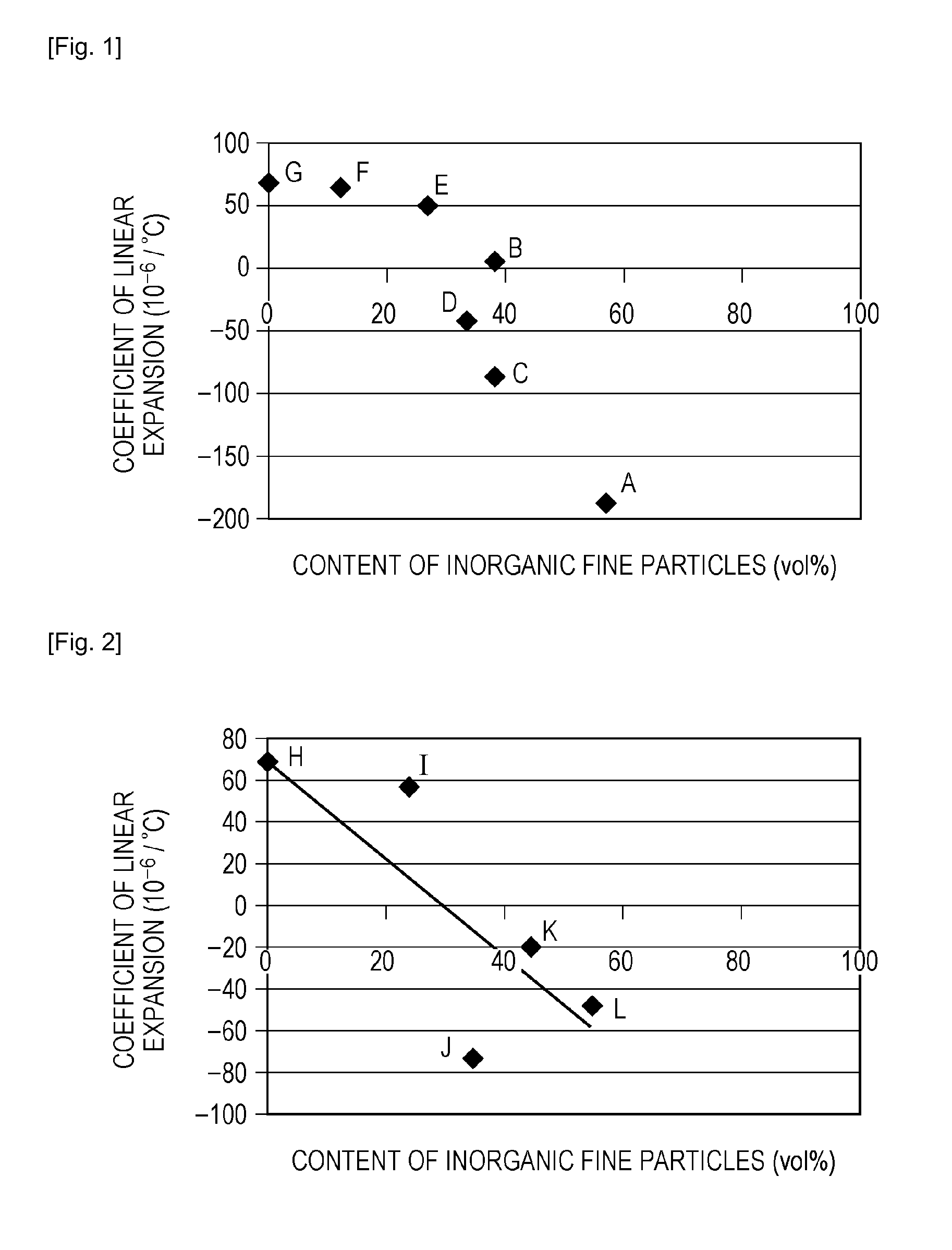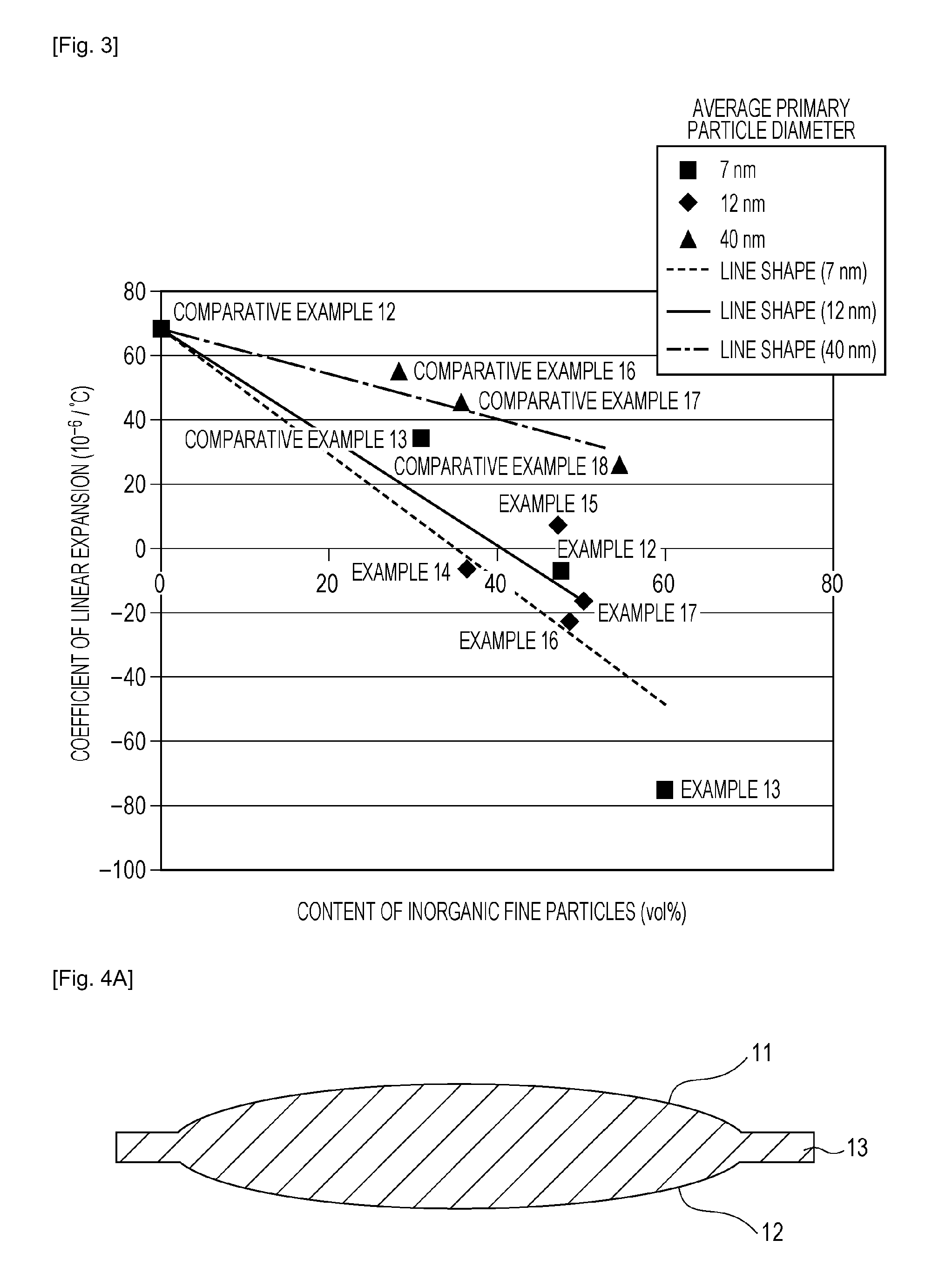Organic-inorganic composite molded product and optical element
- Summary
- Abstract
- Description
- Claims
- Application Information
AI Technical Summary
Benefits of technology
Problems solved by technology
Method used
Image
Examples
first embodiment
[0022]An organic-inorganic composite molded product according to the present invention is an organic-inorganic composite molded product formed by molding a mixed material which includes a poly(methyl methacrylate) and inorganic fine particles surface-modified with a functional group at least having an amino group and in which the content of the inorganic fine particles is 30 to 80 vol %. A coefficient of linear expansion of this organic-inorganic composite molded product in a range of 20 to 60 degrees Celsius is 10*10−6 / degree Celsius or less (however, a negative coefficient of linear expansion is included).
[0023]In the present invention, molding is performed after inorganic fine particles surface-modified with a functional group having an amino group are mixed with a poly(methyl methacrylate) (hereinafter referred to as “PMMA”), so that an organic-inorganic composite molded product having a low coefficient of linear expansion is provided.
Inorganic Fine Particles 1
[0024]As the inorg...
example 1
Mixing of PMMA and Inorganic Fine Particles
[0042]A PMMA resin (Delpet 70NH, manufactured by Asahi Kasei Chemicals Corporation) was mixed with acetone to have a concentration of 5 wt % and was dissolved therein at ordinary temperature (25 degrees Celsius) by an ultrasonic treatment, so that a PMMA / acetone solution was prepared.
[0043]As the inorganic fine particles having an amino group, RA200H (silica, average primary particle diameter of 12 nm, manufactured by Nippon Aerosil Co., Ltd.) was mixed with acetone to have a concentration of 2.5 wt %, so that a (inorganic fine particles / acetone) liquid was prepared.
[0044]To 10 g of the PMMA / acetone solution thus prepared, 20 g of the (inorganic fine particles / acetone) liquid was dripped, and mixing was sufficiently performed using an ultrasonic treatment device. After the acetone in a mixed liquid was spontaneously dried to some extent, the solvent was removed at approximately 210 degrees Celsius for approximately 4 hours in a vacuum furna...
example 2
[0046]An organic-inorganic composite molded product was obtained in a manner similar to that in Example 1 except that the (inorganic fine particles / acetone) liquid was adjusted to have a concentration of 5 wt %, and that 10.6 g of the (inorganic fine particles / acetone) liquid was added to 9.4 g of the PMMA / acetone solution.
PUM
| Property | Measurement | Unit |
|---|---|---|
| Temperature | aaaaa | aaaaa |
| Nanoscale particle size | aaaaa | aaaaa |
| Particle diameter | aaaaa | aaaaa |
Abstract
Description
Claims
Application Information
 Login to View More
Login to View More - R&D
- Intellectual Property
- Life Sciences
- Materials
- Tech Scout
- Unparalleled Data Quality
- Higher Quality Content
- 60% Fewer Hallucinations
Browse by: Latest US Patents, China's latest patents, Technical Efficacy Thesaurus, Application Domain, Technology Topic, Popular Technical Reports.
© 2025 PatSnap. All rights reserved.Legal|Privacy policy|Modern Slavery Act Transparency Statement|Sitemap|About US| Contact US: help@patsnap.com



